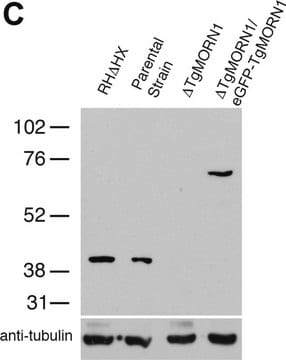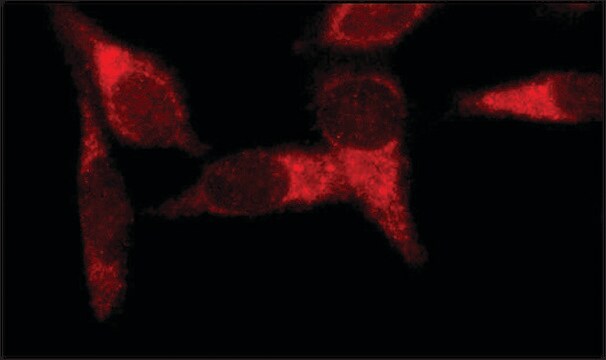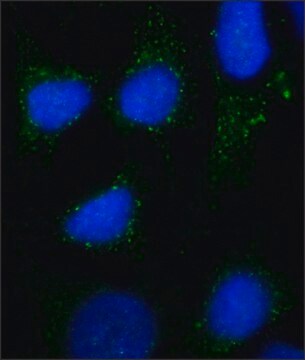07-1820
Anti-EEA1 Antibody
from rabbit, purified by affinity chromatography
Sinónimos:
early endosome antigen 1, early endosome-associated protein, early endosome antigen 1, 162kD, Endosome-associated protein p162, Zinc finger FYVE domain-containing protein 2
About This Item
Productos recomendados
origen biológico
rabbit
Nivel de calidad
forma del anticuerpo
affinity isolated antibody
tipo de anticuerpo
primary antibodies
clon
polyclonal
purificado por
affinity chromatography
reactividad de especies
mouse, human
envase
antibody small pack of 25 μL
técnicas
immunocytochemistry: suitable
western blot: suitable
Nº de acceso NCBI
Nº de acceso UniProt
Condiciones de envío
ambient
modificación del objetivo postraduccional
unmodified
Información sobre el gen
human ... EEA1(8411)
Descripción general
Especificidad
Inmunógeno
Aplicación
Signaling
General Post-translation Modification
Immunocytochemistry Analysis: 1:500 dilution from a previous lot detected EEA1 in HeLa, A431, and C2C12 cells.
Calidad
Western Blot Analysis: A 1:1000 dilution of this antibody detected EEA1 on 10 µg of BALB 3T3/A31 cell lysate.
Descripción de destino
Forma física
Almacenamiento y estabilidad
Nota de análisis
BALB 3T3/A31 cell lysate
Otras notas
Cláusula de descargo de responsabilidad
¿No encuentra el producto adecuado?
Pruebe nuestro Herramienta de selección de productos.
Opcional
Código de clase de almacenamiento
12 - Non Combustible Liquids
Clase de riesgo para el agua (WGK)
WGK 1
Punto de inflamabilidad (°F)
Not applicable
Punto de inflamabilidad (°C)
Not applicable
Certificados de análisis (COA)
Busque Certificados de análisis (COA) introduciendo el número de lote del producto. Los números de lote se encuentran en la etiqueta del producto después de las palabras «Lot» o «Batch»
¿Ya tiene este producto?
Encuentre la documentación para los productos que ha comprado recientemente en la Biblioteca de documentos.
Nuestro equipo de científicos tiene experiencia en todas las áreas de investigación: Ciencias de la vida, Ciencia de los materiales, Síntesis química, Cromatografía, Analítica y muchas otras.
Póngase en contacto con el Servicio técnico








